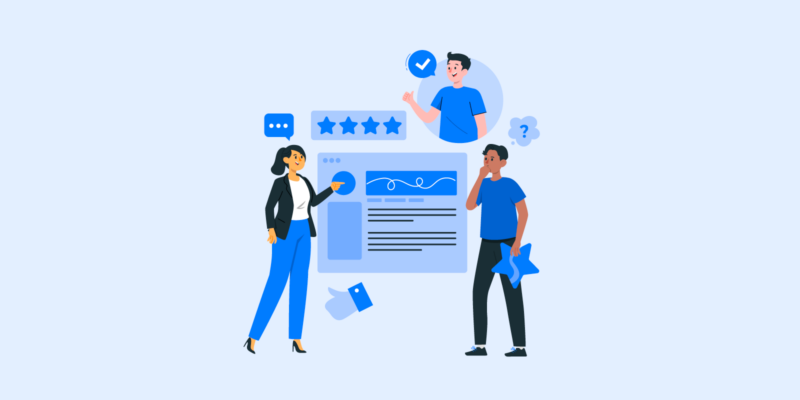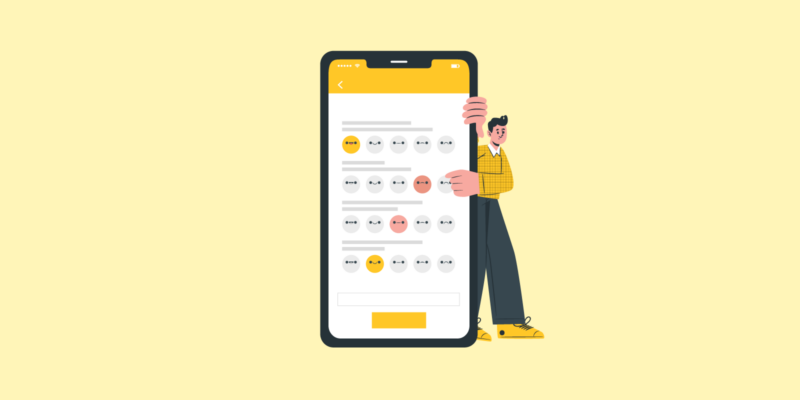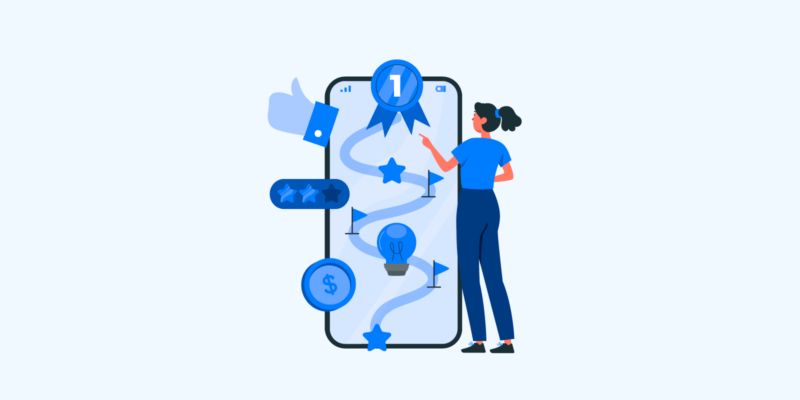SaaS businesses operate in a highly competitive space where the race to stay ahead is relentless. Everyone’s going out of their way to outdo the competition; yet, making customers stay loyal is the real challenge.
Without a doubt, social media offers a window into customer sentiment. Customers often express their sentiments for a brand through their comments or by participating in social surveys. No wonder, brands are using online surveys to gain in-depth insights into what customers think and need.
Using email for surveys can help customers share their thoughts in a structured, reflective manner, providing deep insight into the customers’ insights. They’re direct, they’re personal, and they go straight to the source: your users.
Such focused listening shows how much a company values its customer relationship. It’s a cycle of trust, feedback, and swift action that elevates your product from meeting basic expectations to creating standout user experiences. Each feedback from these product survey questions is a golden opportunity for improvement and innovation.
Now is the time to harness the full power of email surveys that can redefine customer success for your SaaS business.
Let’s check out five such transformative tips.
In this article
1. A compelling subject line can go a long way
The subject line of your email offers you a shot at catching your customer’s eye amidst a sea of new messages. So, it must communicate the matter effectively under 60 characters (for ease of mobile viewing) and communicate the value your survey offers.

A good subject line is direct and enticing, which makes the recipient think this is worth my time. Crafting such a subject line might seem tricky, but it doesn’t have to be.
The average email open rate in the SaaS industry is around 21%. Therefore, it takes some effort to find the best strategies to create a subject line to get maximum responses from email surveys for SaaS customer success.
Customize it
People love seeing their names. It’s simple yet one of the best practices of email marketing. By using the customer’s name in the subject line or personalization can boost open rates by 29.3%. For example, “Danny, we value your feedback!” feels more personal than a generic greeting, “We want your feedback.”
Make it concise
Your customers are busy, so your subject line needs to be more specific or shorter. Otherwise, they might skip over it. Therefore, aim for clarity and brevity. For example, “Help us improve with your feedback, it takes only 3 mins!” tells them exactly what to expect.
Create a sense of urgency
A little nudge can go a long way. Using time-sensitive language encourages immediate action. You can use lines like “Your opinion counts! Survey closes tonight.”
Offer incentives
Entice users to fill in your customer feedback survey by offering perks, as doing the same can boost survey participation by as much as 30%. So, offer a discount or the chance to win something that helps increase your survey participation rates. Consider a subject line like, “Share your thoughts and win a free month of service!”
Emphasize on testing
Lastly, something other than what works for one audience may work for another. Therefore, you can A/B test different subject lines that help discover what resonates best with your customers. Also, implement SPF checker to enhance email security and ensure that your survey emails reach your customers’ inboxes.
2. Personalize email invitations to get more responses
Forbes mentions a report by Dynamic Yield that states 71% of customers think tailored brand emails affect their opening and reading. Therefore, personalize your communication to grab users’ attention, alluring them to submit the survey.

Focus on showcasing how your business recognizes them and what you’re about. It’s a nod to the individual behind the screen, affirming that their thoughts and preferences matter to your business.
This is a rather friendly approach to sending out successful email surveys for SaaS customer success that foster a connection. It can turn a one-time respondent into a long-term advocate for your SaaS product.
Here’s how you can do it right.
Segment the audience
We already shared how to build a winning email list segmentation strategy since not all customers have the same experience with your product. Therefore, it is also crucial to segment your audience based on their usage patterns, subscription levels, or other relevant data like demographic information, purchase history, engagement levels, feedback history, etc. Tailoring your questions to each segment makes your surveys more relevant to each group.
Reference past interactions
If a customer recently contacted support or purchased, mention that in the survey. This shows that you’re paying attention to and value their individual experience. In turn, this increases the chances of getting an honest response over feedback.
Prioritize conversations
Write your email as if you’re speaking to them face-to-face. A conversational tone can make the email feel less like a generic request and more like a continuation of your ongoing relationship.
Keep it contextual
Mention something you know about their experience with your service. For example, “We noticed you’ve used our new feature. What do you think?” Doing so demonstrates that you’re not just tracking their interactions but are genuinely interested in their opinion. It signals that you’re using their activity data to improve the service, not just to monitor usage.
3. Timing is the key when sending email surveys for SaaS customer success
Nail the timing of your email surveys based on the customer’s habits and preferences. This means diving into the data to discern patterns. It means going beyond their email activity and tapping into their interactions with your service.

For example, analytics show that users explore new features on Thursdays. In that case, it’s a golden opportunity to ask for their feedback by Friday when the experience is still top of mind. When you show customers that you engage with them based on interactions, it fosters a more meaningful and action-oriented conversation.
Here are some tips to follow for the same.
Consider user milestones
Send surveys after a user has reached a certain milestone with your product, like completing a tutorial or upgrading their subscription. This way, you can leverage the fresh insights they share at key junctures to make product-based changes for customer satisfaction (if needed).
Analyze open rates
Leverage analytics to identify when your customers are more likely to open emails to discover the best time to send an email. Is it first thing in the morning, during lunch breaks, or perhaps in the evening? Use this data to schedule your email surveys for SaaS customer success. Utilizing a free email verifier can further enhance data accuracy and ensure a clean and reliable customer contact database.
Follow-up at the right time
If they still need to open or respond to your survey, a well-timed follow-up can nudge them to take action. Just ensure it isn’t early enough, or it may appear pushy. Also, be sure your follow-up acknowledges that they’re busy and reiterate how their feedback is valuable.
Mind the external factors
Be aware of holidays, industry events, or significant global happenings that affect your customers’ availability or mindset. Remain attuned to these external factors to demonstrate respect for your customers’ time and avoid your survey being overlooked amidst more pressing events in their lives.
4. Make use of survey logic to enhance relevance
Imagine if your survey could think. Like, it can ask follow-up questions based on what someone responds. That’s what survey logic does. It customizes the experience as someone goes along. It’s like having a smart conversation where you only bring up things that matter to the person you’re talking to.
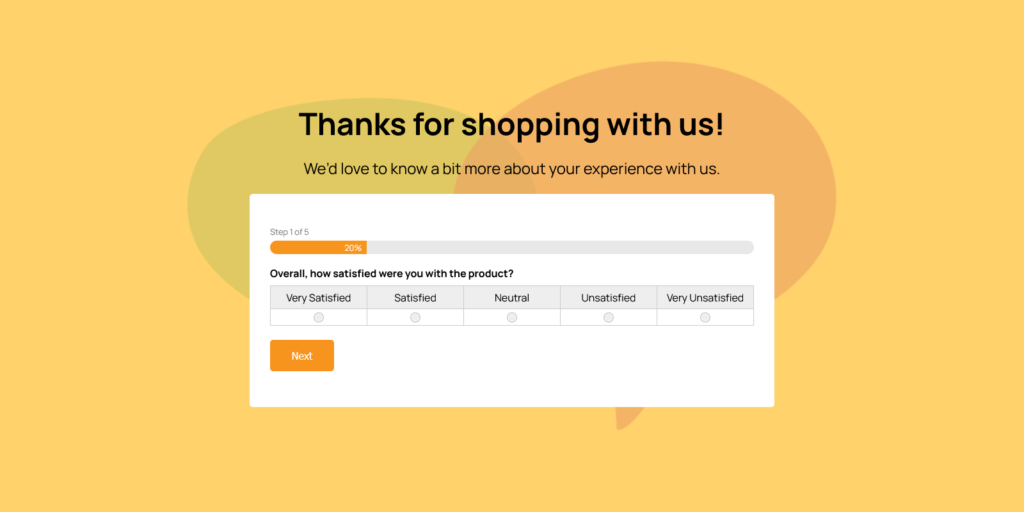
Here’s how you use it.
Optimize it with a branching logic
Consider branching logic as a choose-your-own-adventure book. If a customer says they’re a beginner with your software, don’t send them survey questions that experts can answer honestly. Instead, customize their survey journey to their skills, and they’ll stick with you because they won’t be overwhelmed or bored by irrelevance.
Feedback-driven pathways: Set up a SaaS customer feedback survey to escalate issues based on severity. If a customer reports a major problem, your survey can immediately ask for detailed feedback, triggering a priority alert to your support team.
Smart segmentation: Get the customer data to pre-emptively segment the survey paths. For example, long-term users can be asked about changes over time, while new users can provide fresh first impressions.
Conditional visibility
Set certain questions that appear only if they meet relevant criteria. This keeps the survey uncluttered and ensures you’re only gathering useful data.
Responsive options: Allow users to flag irrelevant questions to improve the survey experience. Also, this informs how you can better structure future surveys to get maximum responses.
Progressive disclosure: Reveal deeper layers of questions based on how much the user wants to share. If they’re engaged and providing detailed feedback, more detailed questions can be introduced to gather richer insights.
Piping responses
Piping is like using someone’s name in a conversation—it makes the interaction feel personal. When a respondent tells you their biggest challenge is “time management,” and the next question says, “How can we make managing your time easier?” you create a dialogue that shows you’re actively listening and customizing the experience.
Continuity in conversation: Maintain a conversational tone using previous responses to formulate subsequent questions. It makes the survey feel less robotic and more like an interview.
Offer relevant examples: If they mention a specific feature, refer back to that feature when asking about overall satisfaction or desired improvements.
5. Leverage analytics to enhance survey precision
Understanding your customers through email surveys requires scratching the surface to unearth a wealth of information. Analytics not only involves counting how many people clicked through your survey but also includes listening to what your customers are telling you through their responses.
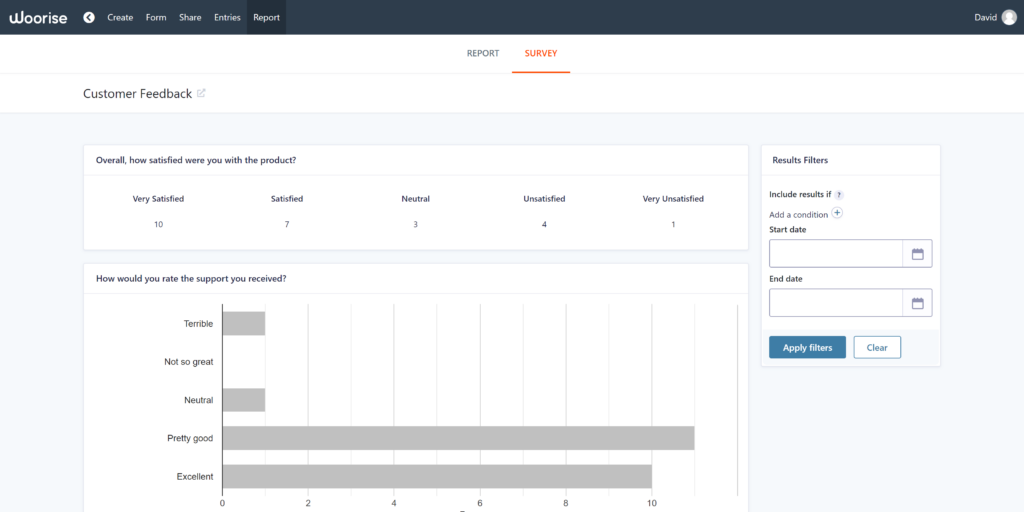
If you’ve got a stack of survey data, there’s a lot you can do with it. It’s about more than just having the data but also understanding it. Take a good look at the responses and notice which features your users love and which ones they struggle with.
For this, you’ll need to keep an eye out for any trends, like specific times when users are more likely to fill out your surveys. This information is key. It helps improve your service and decide when to send out your surveys.
Now, let’s talk about how you can use email surveys specifically to enhance your SaaS customer experience. Let’s explore the best ways to gain valuable insights from your email surveys for SaaS customer success by leveraging analytics.
In-depth response analysis
Go over skimming the surface and look for response patterns to analyze which features get the most praise or cause the most trouble. Discover if there are certain times of the day or week when users are more likely to complete surveys to fine-tune your service and your survey timing.
Sentiment analysis: Use AI tools to assess the sentiment behind the feedback. This can help you understand the emotions associated with user responses, which can be especially useful in open-ended questions.
Trendspotting: Use analytics to check the trend of user feedback over time. For instance, is satisfaction with a particular aspect improving or declining? Such signals where you need to focus your development efforts or customer support.
Heatmaps and click tracking
You can also understand where and how users interact with your survey through heatmaps, and click tracking is vital. This data can indicate if participants are skipping questions or if any sections need clarification.
Optimization opportunities: Look at where users stop completing the survey. Leverage this data to adjust those points, which could help increase the number of people who finish it.
Design improvements: Heatmaps may indicate potential design issues that make the survey hard to navigate. Use this insight to create a more intuitive layout, enhancing the user experience.
Integration with CRM and analytics tools
Link survey data with your CRM and analytics tools to create a holistic view of customer interactions and satisfaction. This can help correlate survey responses with actual customer behavior and outcomes.
Personalized follow-ups: Based on survey responses, create personalized follow-up campaigns or customer service outreach within your CRM to address specific user concerns.
Customer journey mapping: Integrating survey data with user behavior analytics helps better understand how different touchpoints affect customer satisfaction survey plans and strategies for their retention.
Wrapping up
So, we’ve unpacked the real deal about email surveys. They’re not just questions and answers; they’re a direct line to what your customers are thinking and feeling. From crafting attention-grabbing subject lines to personalizing your approach and timing your surveys, we have covered a range of tips that prepare you to use email surveys for SaaS customer success.
The key is to make the survey experience as engaging and relevant as possible for your customers. This helps enhance response rates and deepens the quality of the feedback you receive, leading to a cycle of continuous improvement. Here, every tweak and adjustment you make based on this feedback propels your service to new heights.
With these strategies in hand, you can begin crafting email surveys that not only resonate with your audience but also drive your SaaS product to be the best version of itself, reflecting the needs and desires of those it serves.

